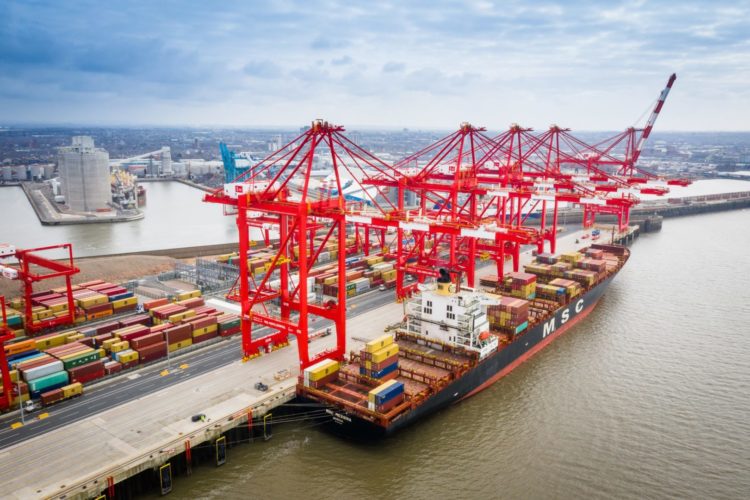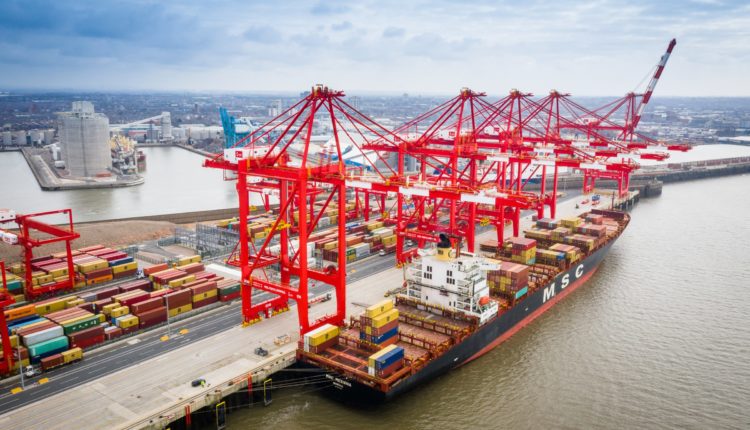East-west rail link ‘critical’ to Port of Liverpool’s growth
New report from law firm Brabners says facilities such as the Port of Liverpool can only reach their full potential through significant transport infrastructure investment. Tony McDonough reports

A new east-west rail link across the North of England is critical to the success of the Port of Liverpool’s efforts to transform the UK’s logistics sector.
Liverpool law firm Brabners claims the North of England risks falling further behind the south in terms of economic growth without Government and private sector investment in road capacity and freight-readiness for rail.
In its report – Supply Chain: The future of the North – Brabners urges manufacturers, retailers and logistics operators in the North to lobby devolved and central powers to ensure future infrastructure investment in the region isn’t delayed by the COVID-19 crisis.
Peel Ports has invested £750m in the Liverpool2 facility at the Port of Liverpool, enabling it to handle 95% of the world’s biggest container vessels. Over the past year Peel has been successful in persuading a number of freight operators to switch to Liverpool from southern ports.
For the past few decades, the bulk of the UK’s imports have come in through southern ports such as Felixstowe, Southampton and Tilbury. Goods are transported by road to logistics hubs in the Midlands and then taken to the North of England and Scotland.
Peel says this is an inefficient way of moving imported goods to the north of the UK and has heavily promoted Liverpool as a viable alternative. Now, with the UK on the verge of a new trade deal with the US, the Port of Liverpool has a golden opportunity to reclaim its status as the gateway to Britain.
However, the port is being held back in maximising that potential by the lack of investment in transport infrastructure across the north of England. Northern Powerhouse Rail, a £39bn plan for a high-speed east-west rail link, would be seen as transformational.
Even before the coronavirus epidemic there were concerns that not enough progress was being made on rail infrastructure. Think tank IPPR North says transport spending in the region per head represents only a quarter of the amount that is spent in London, and significantly less than across the south as a whole.
And now there are worries that the economic impact of COVID-19 may slow the speed of investment, which would have a substantial knock-on effect for the growth potential of the region’s key export industries, including automotive and pharmaceuticals manufacturing.
The report, which features contributions from key regional investor Peel Group as well as major frontline network users such as leading international metal recycler EMR and food distributor NWF Group, identifies east-west connectivity as a major obstacle to business growth.
With road remaining the most affordable but also a congested approach to moving goods in the North, the report calls for improved loading gauges on existing trans-Pennine rail routes. This type of investment would increase the viability of freight transport by rail and reduce the carbon footprint of goods that typically travel by road.

In the report, Gary Hodgson, managing director (port logistics) at Peel Ports, writes: “There is accelerated interest in the North as an access point to the wider UK and this is set to fuel further growth in the decade ahead. Investment is critical if we are to deliver on the region’s ambitions and ensure any increase in international trade is properly supported.
“Putting the point of arrival and departure to one side, there are still significant hurdles to overcome so businesses can ship products closer to their end destination, create shorter supply chains and, ultimately, reduce the costs and carbon emissions associated with moving international goods.
“To do this, we need to work in partnership with local and national authorities to look at effective road and rail interventions that ultimately lead to better productivity and therefore reduce the cost of inland travel – whether by road or rail.
“The Port of Liverpool’s own private rail network has the capacity to support 20 trains per day. Current demand sees up to 10 trains from our Bootle rail terminal each day. It’s my hope that, in years to come, we will be talking about trains destined on a clear route to the east coast having filled that capacity. If we wait too long though, it’s clear that opportunities will have been missed.”
Richard Whiting, chief executive of NWF, added: “We’re encouraging European manufacturers to reroute their goods to Liverpool and that is gaining momentum but the port is still under-utilised because most food importers see the South East as the centre of economic activity in the UK.”
And Roy Barry, head of manufacturing and supply chain at Brabners, said: “It’s clear that much of the lifeblood of the North lies in its ports, airports, industrial estates, distribution parks and the arterial routes that serve them.
“As such, much more needs to be done to make the region’s freight and logistics infrastructure fit for purpose and ready for growth.While we welcome the new deal recovery plans announced by Boris Johnson, they must translate into an equitable distribution of support measures that directly benefit the regional economy.”

